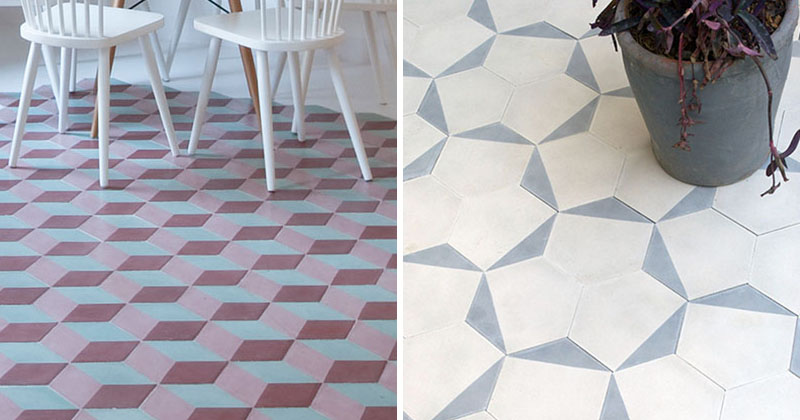Unlocking Style: A Comprehensive Guide to Tile Flooring Patterns
Tile flooring offers unparalleled versatility, allowing for a stunning array of design possibilities. Beyond simply choosing a tile type, the pattern you select significantly impacts the overall aesthetic of your space. From classic and timeless designs to modern and bold arrangements, the world of tile flooring patterns is vast and exciting. This comprehensive guide delves into various popular patterns, offering insights into their suitability for different rooms, design styles, and the overall impact they create.
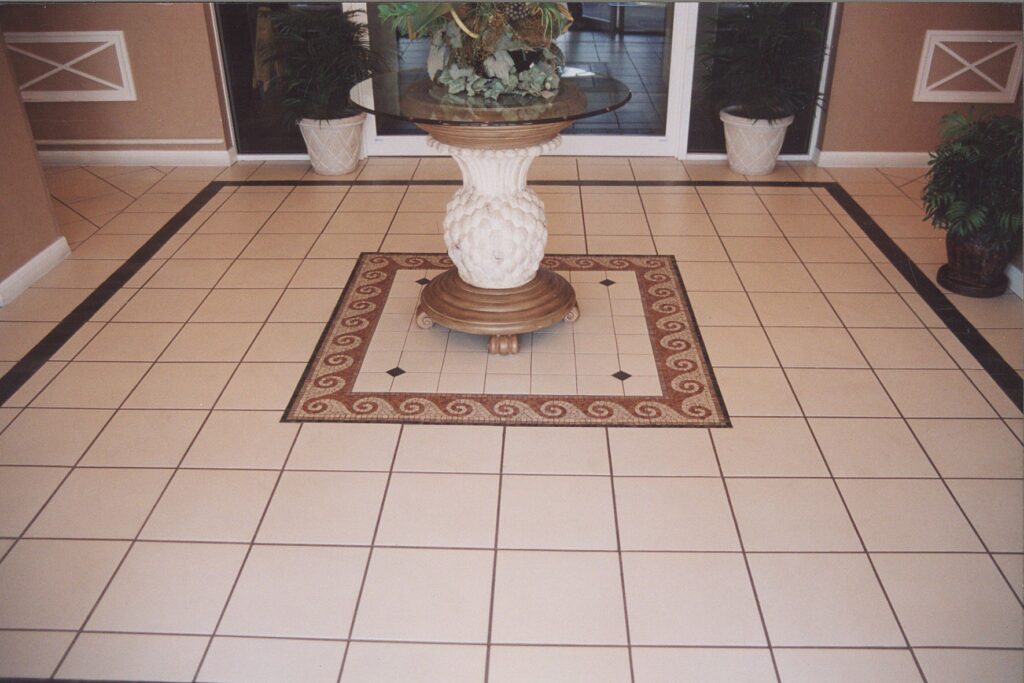
Understanding the Impact of Tile Patterns
The pattern of your tile flooring is more than just a visual element; it influences the perceived size and shape of a room, the flow of traffic, and even the mood it evokes. A carefully chosen pattern can enhance the architectural features of your home or subtly camouflage imperfections. Consider these factors when selecting a pattern:
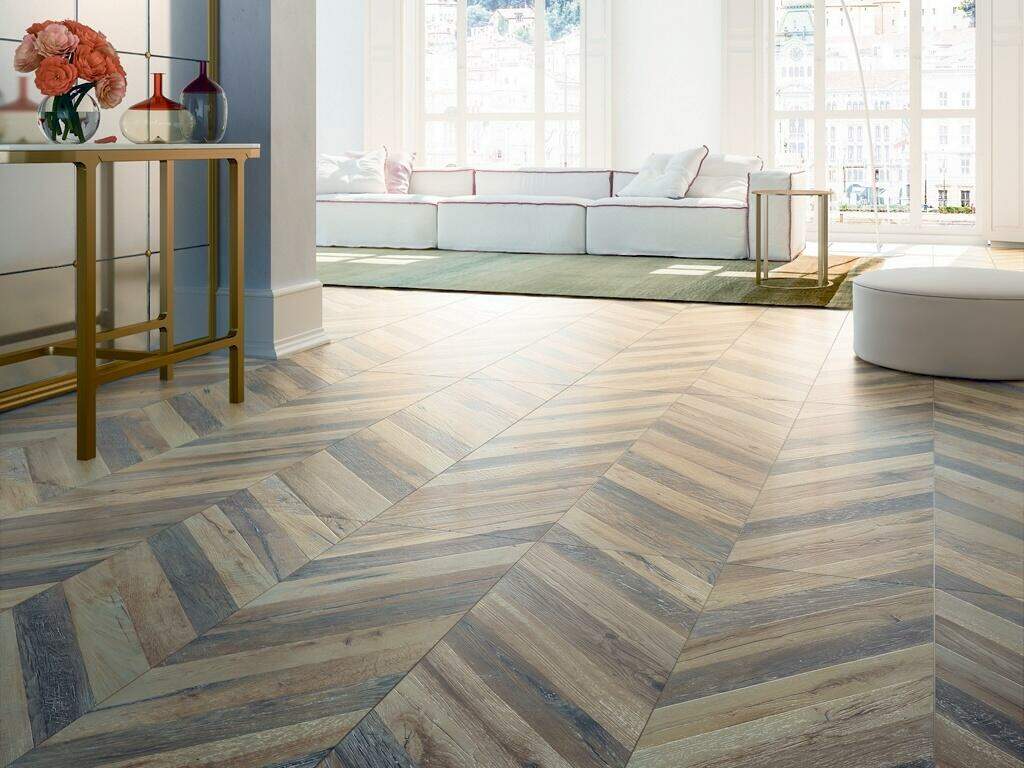
- Room Size and Shape: Large rooms can accommodate intricate patterns, while smaller spaces might benefit from simpler designs to avoid overwhelming the area. Long, narrow rooms might benefit from patterns that run lengthwise to visually lengthen the space.
- Room Function: High-traffic areas like hallways or kitchens might require durable tiles and patterns that mask dirt and scratches effectively. Bathrooms, on the other hand, allow for more creative and decorative choices.
- Overall Design Style: The tile pattern should complement the existing decor and style of your home. A rustic farmhouse might suit a herringbone pattern, while a modern minimalist home might opt for a simple grid.
- Tile Size and Shape: The size and shape of your tiles significantly affect the final look of the pattern. Larger tiles create a more spacious feel, while smaller tiles can add texture and detail.
Popular Tile Flooring Patterns
1. Running Bond: The Classic Choice
The running bond pattern is the most straightforward and widely used tile layout. Tiles are arranged in parallel rows with a staggered offset, creating a clean and simple look. Its versatility makes it suitable for various rooms and design styles. It’s easy to install, making it a cost-effective option.
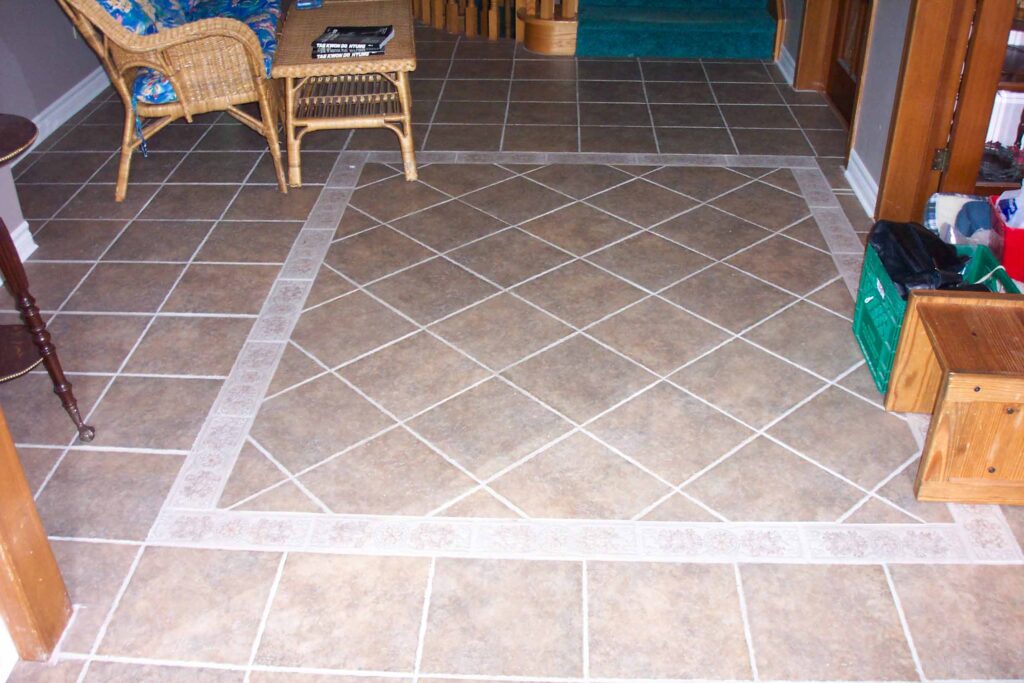
2. Stack Bond: Clean Lines and Modernity
In a stack bond pattern, tiles are arranged in straight, vertical lines, creating a clean and modern look. This pattern is ideal for contemporary spaces and emphasizes the tile’s color and texture. It can create a sense of order and sophistication.
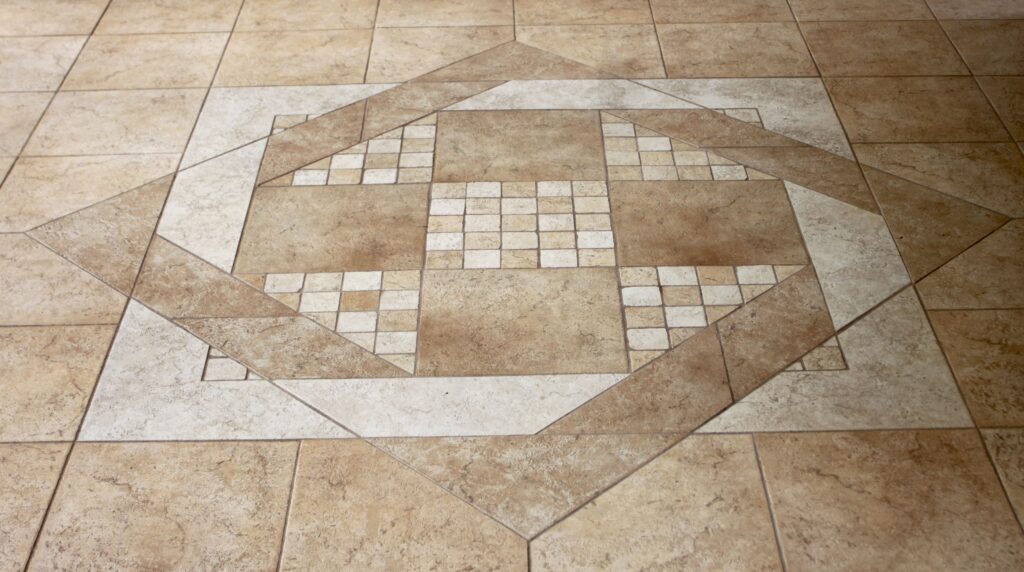
3. Herringbone: Timeless Elegance and Visual Interest
The herringbone pattern features tiles arranged in a V-shape, resembling the bones of a fish. It adds a touch of timeless elegance and visual interest to any room. This pattern works well in both traditional and modern settings, adding a sense of sophistication and character. Consider using different tile colors or sizes to enhance the pattern’s visual appeal.
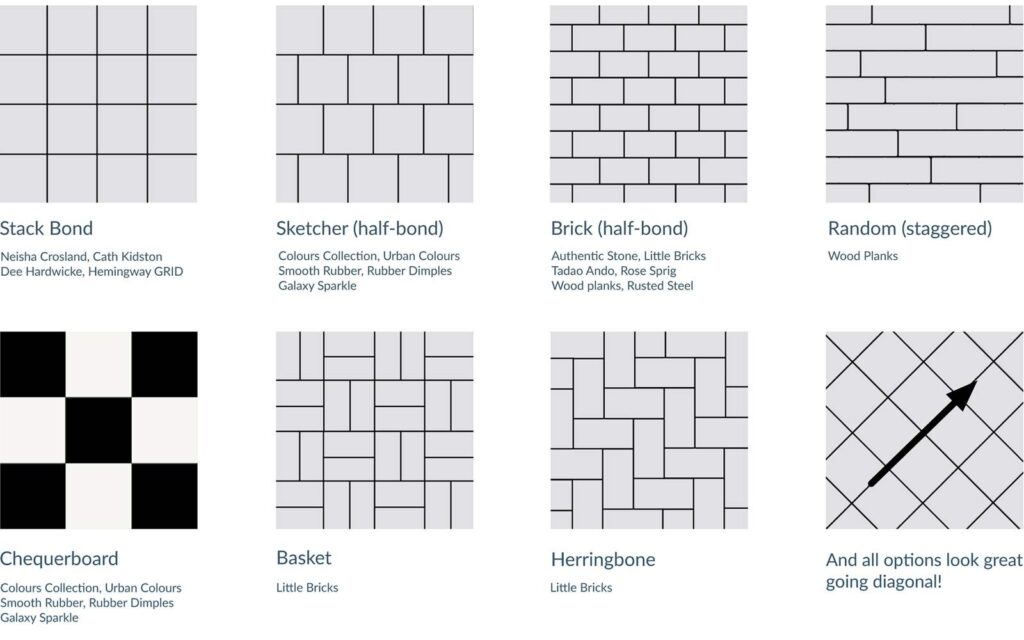
4. Basketweave: Textural Depth and Rustic Charm
The basketweave pattern uses rectangular tiles arranged in a woven pattern, creating a sense of texture and depth. This pattern is often associated with rustic and traditional design styles, adding warmth and character to a space. The visual interest it provides can make it a focal point of the room.
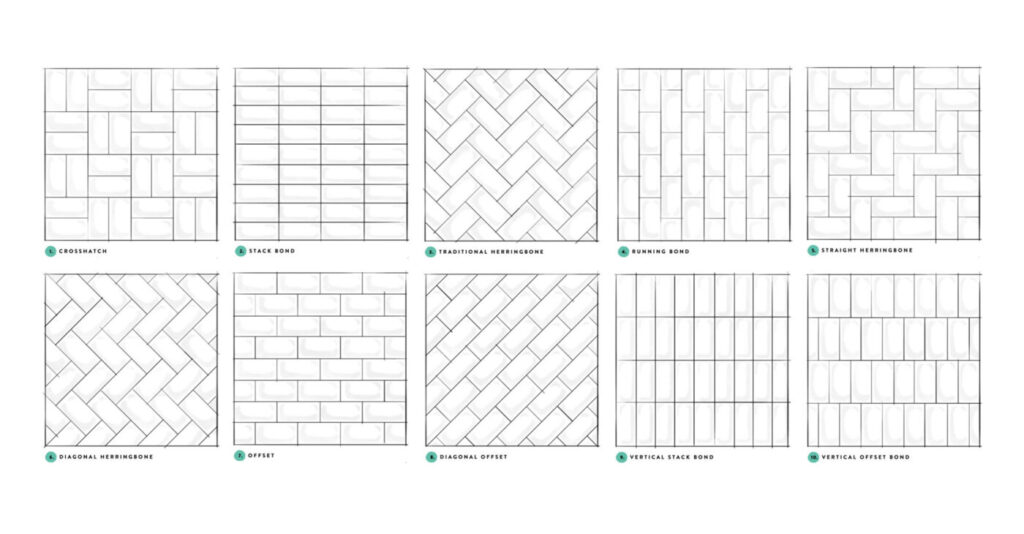
5. Chevron: Angled Elegance for a Bold Statement
Similar to herringbone, the chevron pattern features angled tiles, but with a more pronounced and dramatic angle. It’s a bold and sophisticated pattern that adds a touch of modern elegance. Chevron patterns can create a visually striking impact, particularly when using contrasting tile colors.
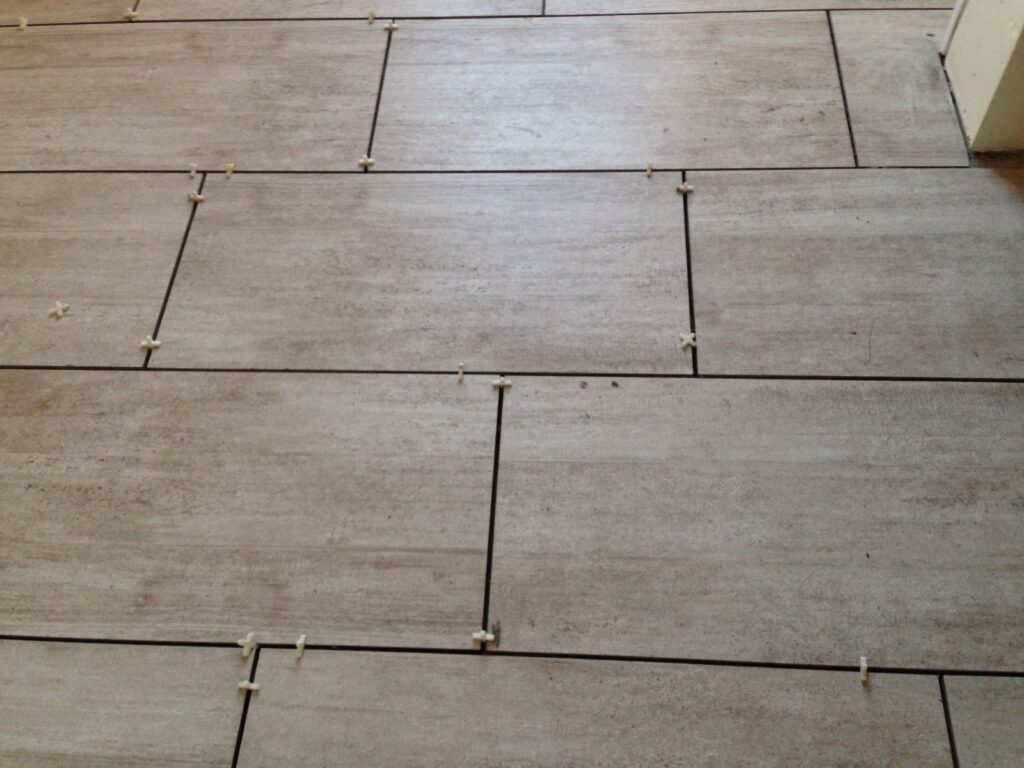
6. Diagonal Patterns: Adding Dimension and Visual Interest
Arranging tiles diagonally adds depth and visual interest to a space. This technique can make a room appear larger and more dynamic. Diagonal patterns work well with various tile shapes and sizes, offering flexibility in design choices.
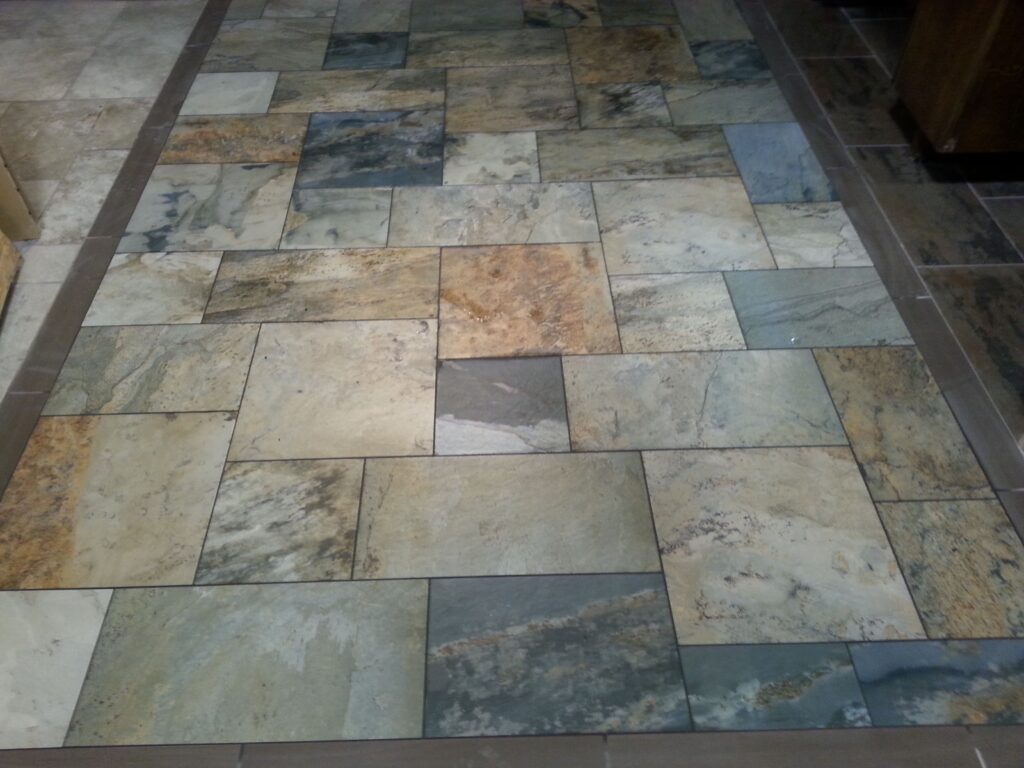
7. Geometric Patterns: Creative and Modern Aesthetics
Geometric patterns offer limitless creative possibilities, ranging from simple squares and triangles to complex, intricate designs. They can introduce a strong modern aesthetic and are particularly well-suited for contemporary spaces. Custom geometric patterns can also be created to match specific design themes.
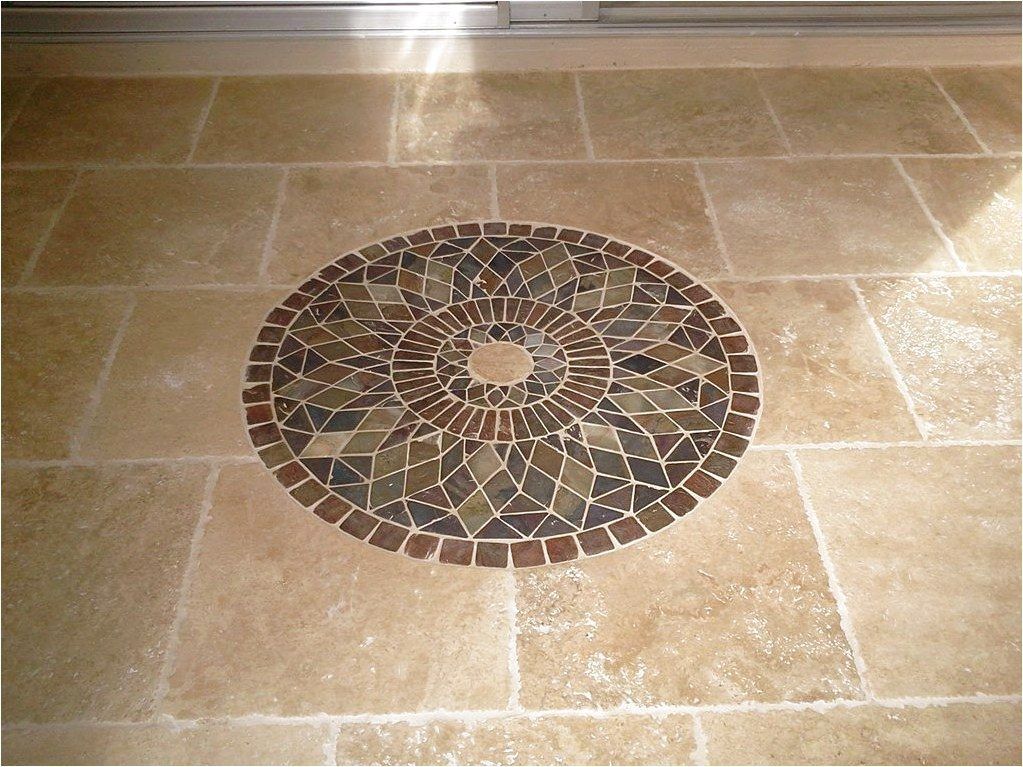
8. Encaustic Tile Patterns: Historical Charm and Artistic Flair
Encaustic tiles are known for their intricate, deeply colored designs. These tiles are often arranged in patterns that highlight their artistic detail. This choice adds a touch of historical charm and artistic flair to a room.
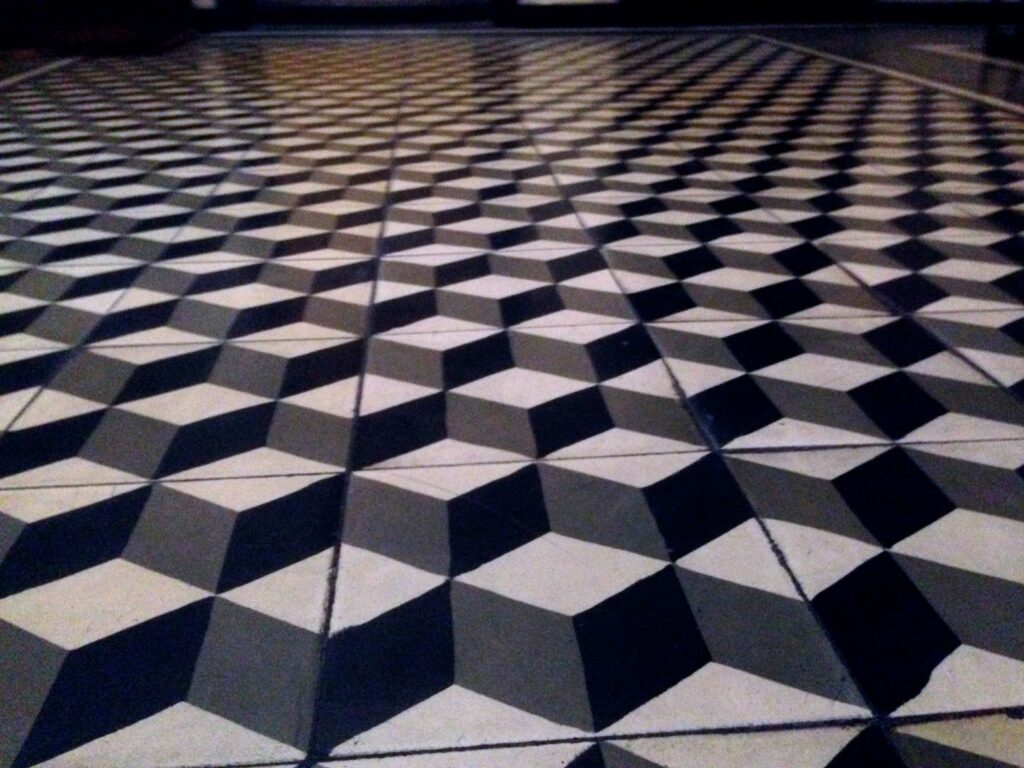
Choosing the Right Tile Pattern for Your Home
Selecting the perfect tile flooring pattern requires careful consideration of various factors. Experiment with different patterns using online tile visualization tools or by creating mockups with sample tiles. Consider the overall style of your home, the size and shape of the room, and the level of traffic the area receives.
Don’t hesitate to seek professional advice from a tile installer or interior designer. They can provide valuable insights and help you select a pattern that complements your vision and enhances your home’s aesthetic appeal.
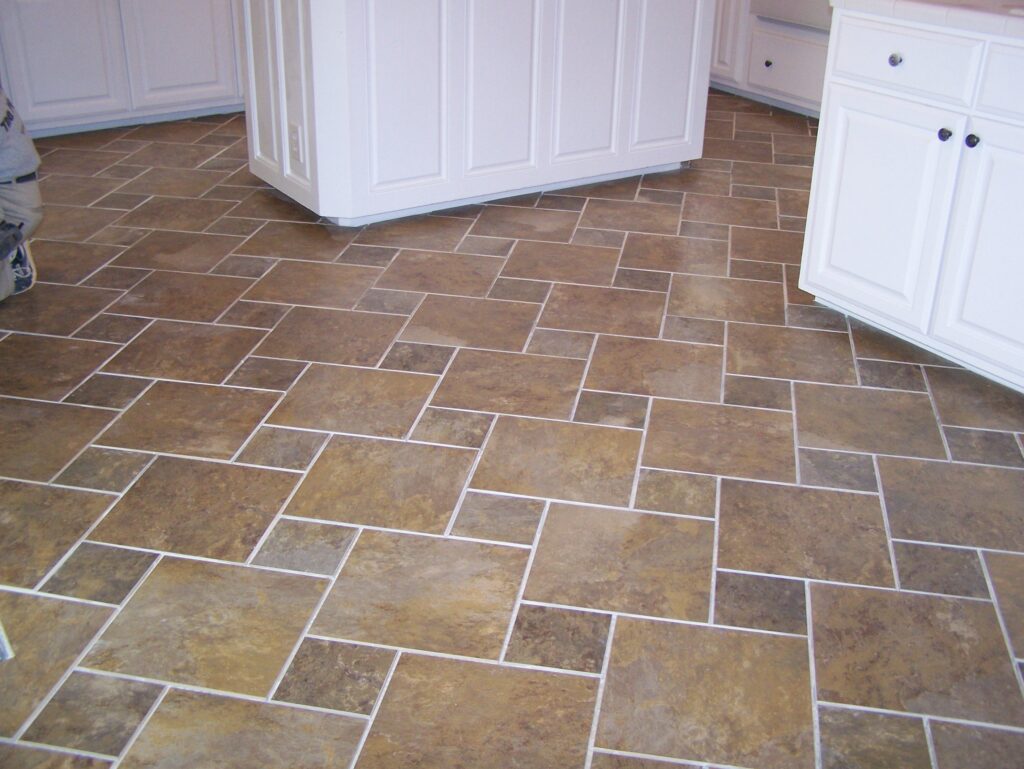
Maintaining Your Tile Flooring
Proper maintenance ensures the longevity and beauty of your tile flooring. Regular sweeping or vacuuming removes loose dirt and debris. Periodic mopping with a pH-neutral cleaner prevents buildup and keeps your tiles sparkling. Avoid harsh chemicals or abrasive cleaners that can damage the tile’s surface. Addressing spills promptly prevents staining.
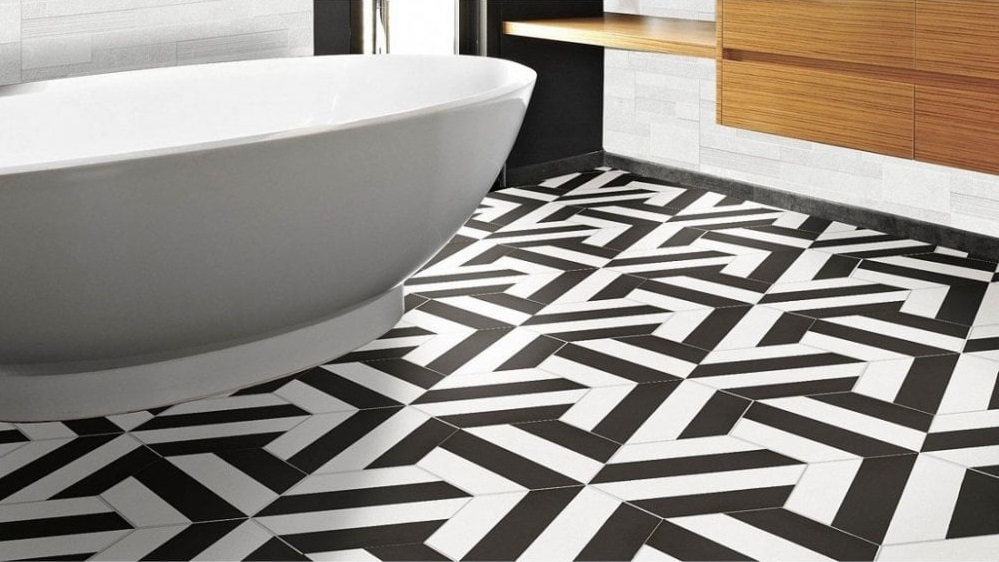
Conclusion
The selection of tile flooring patterns is a crucial aspect of interior design, offering a wealth of possibilities to enhance the beauty and functionality of your home. By understanding the impact of different patterns and considering factors such as room size, function, and style, you can create a truly stunning and personalized space. With the right planning and execution, your tile flooring can become a striking feature that elevates your home’s overall aesthetic for years to come.
